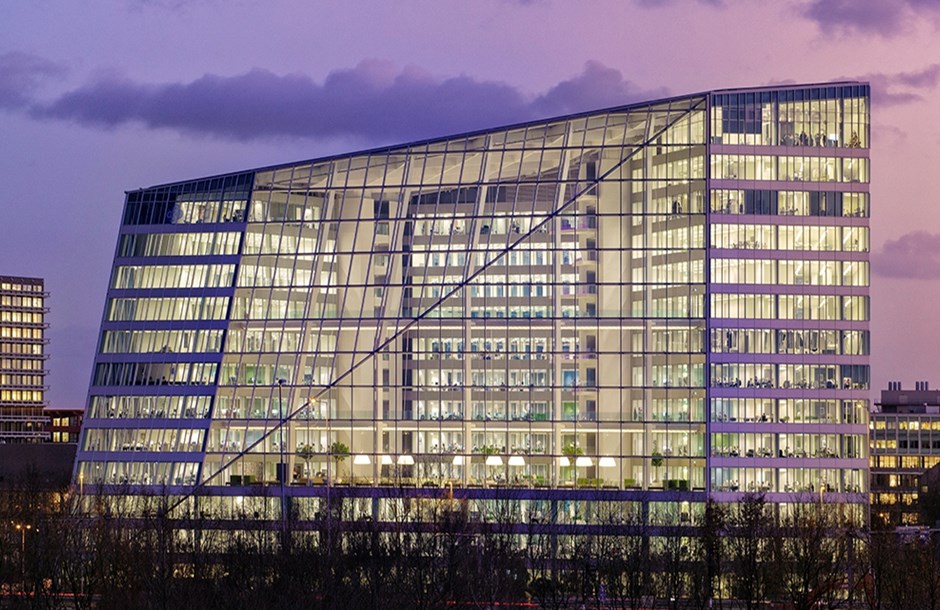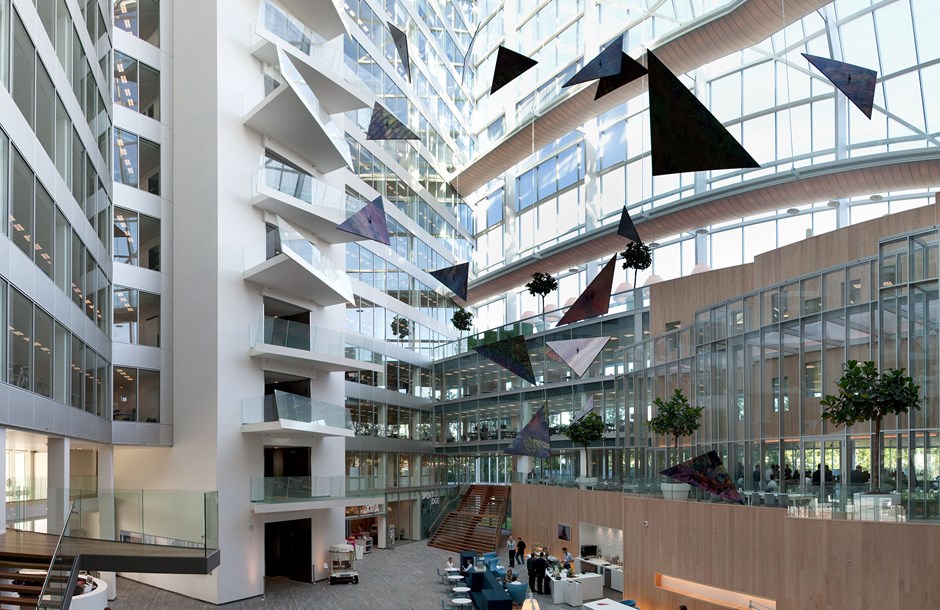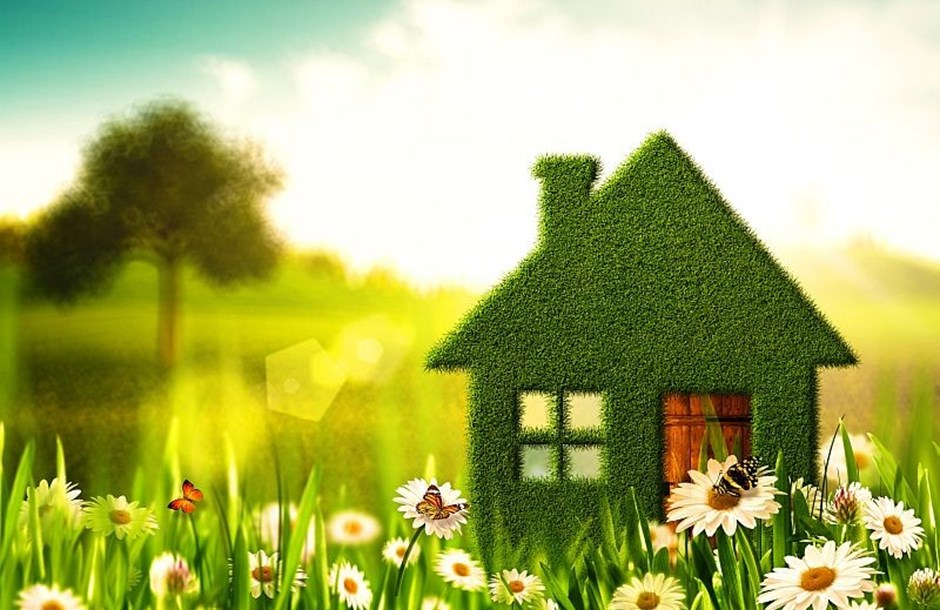Fun facts: The greenest building in the world

Construction and the built environment accounts for approximately 40% of the world’s CO2 emissions – this includes constructing buildings and infrastructure, as well as the energy used to power them.
As the world has responded to climate change with strict targets on reducing carbon emissions, building more sustainably has become a priority. One of the best ways to achieve this is to construct more green buildings.
What is a “green building?”
A green building is a building that in its design, operation or construction, reduces or eliminates negative impacts – and can create positive impacts – on our climate and natural environment. Green buildings preserve natural resources and improve our overall quality of life.
Simply put, green construction or sustainable architecture is creating and using buildings to be as friendly to the natural environment as possible. This involves using natural, durable building materials, constructed using sustainable building methods. Green construction brings huge economic, social and environmental benefits.
Find out more about how the construction industry is going green.
What makes a building ‘the greenest?’
It is difficult to say which building is greener than any other, as there are so many factors to take into account – the impact of its construction on the natural environment, the balance between the operational emissions it generates with the resources it saves and gives back. It can be hard to assess the green credentials of a new building or one that has only recently had sustainable adaptations fitted. The specifications of a building may look impressive, but they should be measured against the hard data of the day-to-day operation of the building. Certification schemes like BREEAM are highly respected, however, and give a very good indication of the sustainable qualities of a building.
The Edge, Amsterdam, Netherlands
The Edge in Amsterdam is often considered the world’s greenest office building. Colloquially known as ‘a computer with a roof’, Deloitte’s office in the Dutch capital is very smart and very green. Vast amounts of data are collected to monitor all of the building’s systems, continually adjusting to minimise its carbon footprint.
The 430,000-square-foot building uses 70% less energy than a comparable office building. Opened in 2014, the building is not only net zero, but net energy positive, meaning it produces more electricity than it consumes, with the extra energy used to power the nearby university.
Find out about other notable net zero buildings.
Green technology
The Edge is oriented along the path of the sun to achieve greater efficiency for its 65,000 square feet of solar panels which cover the roof and facades.
Other green elements of the building include Ethernet-powered low-energy LED lighting, collecting rainwater for irrigation and to flush the toilets, and an aquifer thermal energy system to heat and cool the building. These groundwater sources are 130 metres underground, and pump warm or cold water into or out of the building, depending on the outside temperature.
Sustainable building materials
One of the main sustainable materials used in The Edge is glass. The north-facing façade is 70% glass, the south is 45%, and the east and west are roughly 40%. Glass has been around for millennia – but it is an extremely resource-efficient material; it’s fully recyclable and can be recycled over and over again. The south façade also consists of heavy load-bearing walls, providing effective thermal mass through heat gain – naturally heating the office.
Like most buildings, bricks and mortar were still needed – but like many of The Edge’s materials, they were sourced locally to reduce the environmental impact. The building also used plenty of timber throughout its construction cycle, and it’s estimated the materials used will save 42 million kg of CO2 in 10 years, compared to a standard office building.
Sustainable building materials are going to play a vital role in the construction industry over the next 20-30 years, as their use will be critical in helping the UK achieve net zero by 2050.

Renewable energy and energy efficiency
The Edge features many innovative examples of renewable energy and energy efficiency, including:
- Thermal energy storage – two 129-metre-deep wells reach down to an aquifer, allowing thermal energy to be stored underground and used whenever it’s needed
- Energy reuse – excess ventilation air is ventilated back out through the atrium of the building, passing through a heat exchanger to reuse and reheat the air – creating a circle of natural ventilation
- Smart lighting – the building’s LED light system is monitored by over 30,000 sensors, measuring occupancy, movement, lighting levels, humidity and temperature, automatically adjusting to make best use of and conserve energy
Wildlife-friendly design
The Edge is a good example of a building that encourages wildlife. The landscaping on the north-facing terrace includes birdhouses and bat boxes, and towers that support bees and bugs. Sustainable buildings can enhance biodiversity rather than diminish it, through features like green roofs and living walls.
Wellness centric design
The Edge is a building that makes people feel calm, comfortable and relaxed. It does this through smart technology and the way it is designed, bathing the interior with natural light, which is proven to have a positive effect on mental health. The intelligent ventilation inside the building can be controlled by anyone inside it through the use of an app, along with light levels and temperature. At the heart of the Edge is the giant atrium, which encourages social interaction and reduces feelings of isolation.
Certification & awards
The rating agency BREEAM, which scores buildings based on their sustainability, gave The Edge their second-highest score ever: 98.4%. The architects, PLP, received widespread recognition for The Edge – it was shortlisted for numerous awards and won the Urban Land Institute Global Awards for Excellence in 2016.
Is the greenest building an existing building?
Although The Edge can claim to be the world’s greenest new building, the greenest building is in fact one that is already standing and has been for years. Because so much of a building’s carbon footprint is generated during its construction, adapting a building to become greener should be a more sustainable solution than demolishing it and constructing a new one – however, sustainably the new one is built. That is the challenge facing the construction industry, because 80% of the buildings that will be needed by 2050 already exist.
A 2016 report by the US National Trust for Historic Preservation said that ‘reusing an existing building and upgrading it to be as efficient as possible is almost always the best choice regardless of building type and climate’. It is the ultimate form of recycling.

What is the future of green buildings?
Green construction has come a long way, but there’s more to do.
Energy efficiency in construction has gained a lot of traction in recent years, largely because of buildings’ significant share of global energy consumption. Falling costs, combined with government support and the need to meet net zero targets, as well as more environmentally conscious building owners and users, are helping to drive change.
The adoption of more efficient technologies such as heat pumps, advanced ventilation systems and smart building applications is driving more and more green building. These technologies are essential for decarbonising buildings to address climate change. Initiatives such as the Supply Chain Sustainability School are encouraging builders to place sustainability at the heart of their projects.
The Edge is a pioneering example of what green buildings can achieve – smart, efficient and good for the environment.
This is the future of the construction industry.
Want to find out more about sustainable careers in construction?
With the construction industry having such a clear focus on green building, there are great opportunities available for careers in sustainable building. At Go Construct we have over 170 different job profiles, including many roles in sustainability:
These are just a few – there are also roles in technology. Here’s our full summary of green construction careers.
